Wards was the last of Sheffield’s major local breweries, closing down in the summer of 1999. For almost 160 years, Wards produced a range of beers well known to Sheffield’s pub-goers, with names such as Sheffield Best Bitter, Kirby Strong and Waggledance. Kirby Strong immortalised John Kirby, who started it all back in 1840 when he established the Sheaf Island Brewery, on Effingham Road.
A plaque documenting the Sheffield steel industry.

The text reads: Sheffield has an international reputation for steel making. It established itself as one of England’s main industrial city’s during the 18th, 19th and 20th centuries using Sheffield’s unique combination of local iron, coal and water power supplied by the local rivers. These factors allowed the industry to grow creating a substantial amount of employment, resulting in a large increase of the city’s population.
The Steel Industry dates back to the 14th century. Benjamin Huntsman discovered the Crucible Technique (a refining process) for steel manufacture in 1740 at his workshop in the Handsworth district, north west Birmingham. The quantity and quality of steel was greatly improved with this process, although a century later it was made obsolete by Henry Bessemer’s invention of the Bessemer Converter in 1856. This process was used for the mass production of steel from molton pig iron, which proved to be an inexpensive industrial process. Bessemer moved his steel company to Sheffield to be at the heart of the industry.
In the early 18th century Thomas Boulsover invented Sheffield Plate (silver plated copper), more recently in 1912 Harry Brearly invented Stainless Steel, which became a major Sheffield Steel product.
Today the industry concentrates on more specialist steel making and currently produces more steel per year than it did at any other time in its history.
A framed passage about the history of Sheffield’s steel industry.
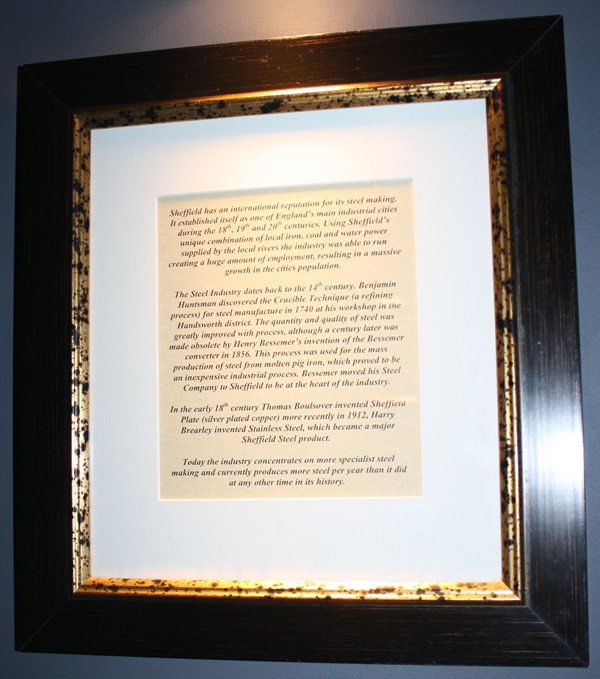
The text reads: Sheffield has an international reputation for its steel making. It established itself as one of England’s main industrial cities during the 18th, 19th and 20th centuries. Using Sheffield’s unique combination of local iron, coal and water power supplied by the local rivers the industry was able to run creating a huge amount of employment, resulting in a massive growth in the cities population.
The Steel Industry dates back to the 14th century. Benjamin Huntsman discovered the Crucible Technique (a refining process) for steel manufacture in 1740 at his workshop in the Handsworth district. The quantity and quality of steel was greatly improved with process, although a century later was made obsolete by Henry Bessemer’s invention of the Bessemer converter in 1856. This process was used for the mass production of steel from molten pig iron, which proved to be an inexpensive industrial process. Bessemer moved his Steel Company to Sheffield to be at the heart of the industry.
In the early 18th century Thomas Boulsover invented Sheffield Plate (silver plated copper) more recently in 1912, Harry Brearly invented Stainless Steel, which became a major Sheffield Steel product.
Framed photographs and text about Mark Firth.
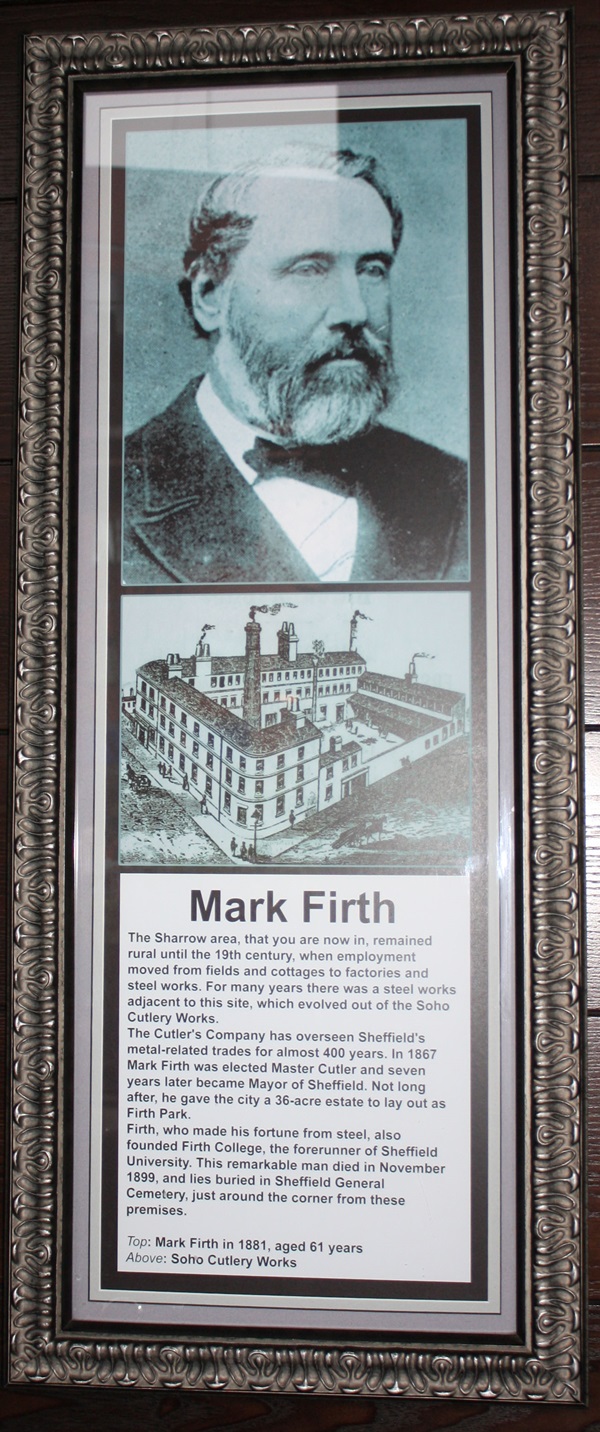
The text reads: The Sharrow area, that you are now in, remained rural until the 19th century, when employment moved from fields and cottages to factories and steel works. For many years there was a steel works adjacent to this site, which evolved out of the Soho Cutlery Works.
The Cutler’s Company has overseen Sheffield’s metal-related trades for almost 400 years. In 1867 Mark Firth was elected Master Cutler and seven years later became Mayor of Sheffield. Not long after, he gave the city a 36-acre estate to lay out as Firth Park.
Firth, who made his fortune from steel, also founded Firth College, the forerunner of Sheffield University. This remarkable man died in November 1899, and lies buried in Sheffield General Cemetery, just around the corner from these premises.
Top: Mark Firth in 1881, aged 61 years
Above: Soho Cutlery Works.
Framed drawings and text about George Wostenholm.
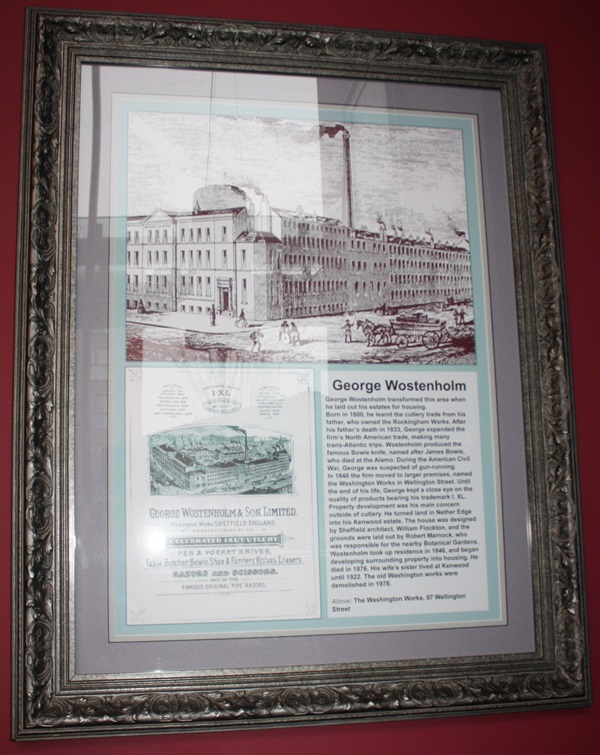
The text reads: George Wostenholm transformed this area when he laid out his estates for housing.
Born in 1800, he learnt the cutlery trade from his father, who owned the Rockingham Works. After his father’s death in 1833, George expanded the firm’s North American trade, making many trans-Atlantic trips. Wostenholm produced the famous Bowie knife, named after James Bowie, who died at the Alamo. During the American Civil War, George was suspected of gun-running. In 1848 the firm moved to larger premises, named the Washington Works in Wellington Street. Until the end of his life, George kept a close eye on the quality of products bearing his trademark I. XL. Property development was his main concern outside of cutlery. He turned land in Nether Edge into his Kenwood estate. The house was designed by Sheffield architect, William Flockton, and the grounds were laid out by Robert Marnock, who was responsible for the nearby Botanical Gardens. Wostenholm took up residence in 1846, and began developing surrounding property into housing. He died in 1876. His wife’s sister lived at Kenwood until 1922. The old Washington works were demolished in 1978.
Above: The Washington Works, 97 Wellington Street.
Framed photographs, illustrations and text about Charles Peace.
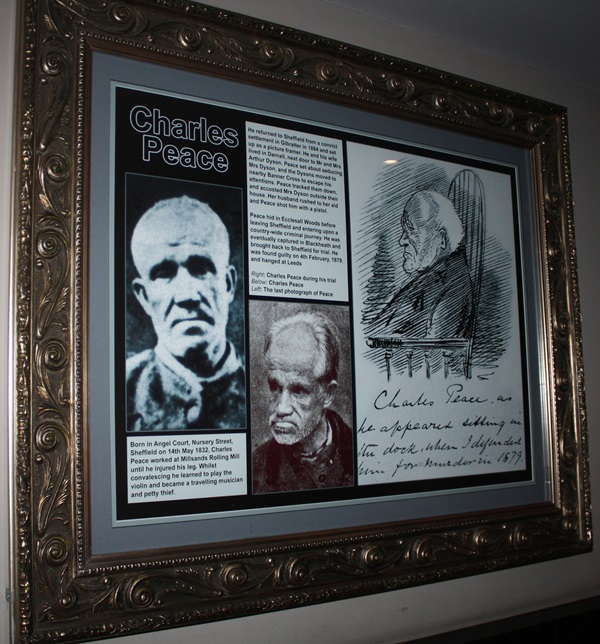
The text reads: Born in Angel Court, Nursery Street, Sheffield on 14th May 1832, Charles Peace worked at Millsands Rolling Mill until he injured his leg. Whilst convalescing he learned to play the violin and became a travelling musician and petty thief.
He returned to Sheffield from a convict settlement in Gibraltar in 1864 and set up as a picture framer. He and his wife lived in Darnall, next door to Mr and Mrs Arthur Dyson. Peace set about seducing Mrs Dyson, and the Dysons moved to nearby Banner Cross to escape his attentions. Peace tracked them down, and accosted Mrs Dyson outside their house. Her husband rushed to her aid and Peace shot him with a pistol.
Peace hid in Eccleshall Woods before leaving Sheffield and entering upon a country-wide criminal journey. He was eventually captured in Blackheath and brought back to Sheffield for trial. He was found guilty on 4th February, 1879, and hanged at Leeds.
Right: Charles Peace during his trial
Below: Charles peace
Left: The last photograph of Peace.
A framed photograph of Michael Vaughan and text about sporting stars from Sheffield.
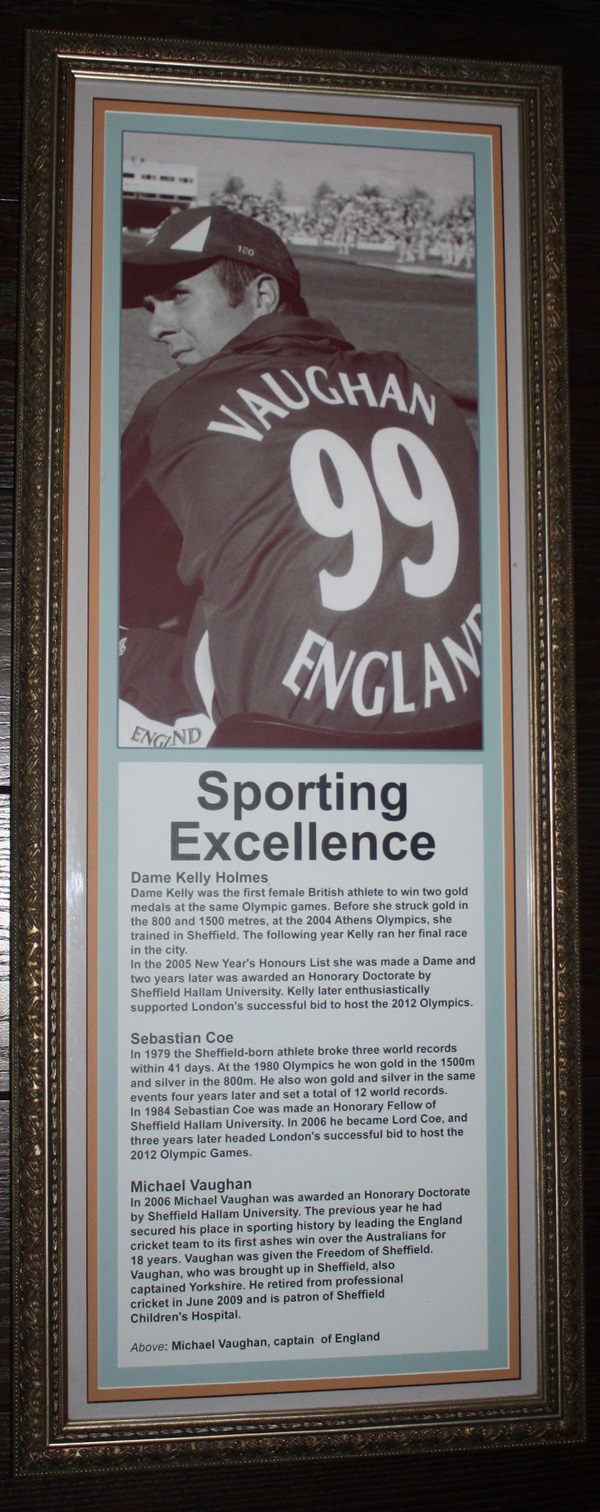
The text reads:
Dame Kelly Holmes
Dame Kelly was the first female British athlete to win two gold medals at the same Olympic games. Before she struck gold in the 800 and 1500 metres, at the 2004 Athens Olympics, she trained in Sheffield. The following year Kelly ran her final race in the city.
In 2005 New Year’s Honours List she was made a Dame and two years later was awarded an honorary Doctorate by Sheffield Hallam University. Kelly later enthusiastically supported London’s successful bid to host the 2012 Olympics.
Sebastien Coe
In 1979 the Sheffield-born athlete broke three world records within 41 days. At the 1980 Olympics he won gold in the 1500m and silver in the 800m. He also won gold and silver in the same events four years later and set a total of 12 world records. In 1984 Sebastien Coe was made an Honorary Fellow of Sheffield Hallam University. In 2006 he became Lord Coe, and three years later headed London’s successful bid to host the 2012 Olympic Games.
Michael Vaughan
In 2006 Michael Vaughan was awarded an Honorary Doctorate by Sheffield Hallam University. The previous year he had secured his place in sporting history by leading the England cricket team to its first ashes win over the Australians for 18 years. Vaughan was given the Freedom of Sheffield. Vaughan, who was brought up in Sheffield, also captained Yorkshire. He retired from professional cricket in June 2009 and is patron of Sheffield Children’s Hospital.
Above: Michael Vaughan, captain of England.
Framed photographs of Sebastien Coe and Dame Kelly Holmes.
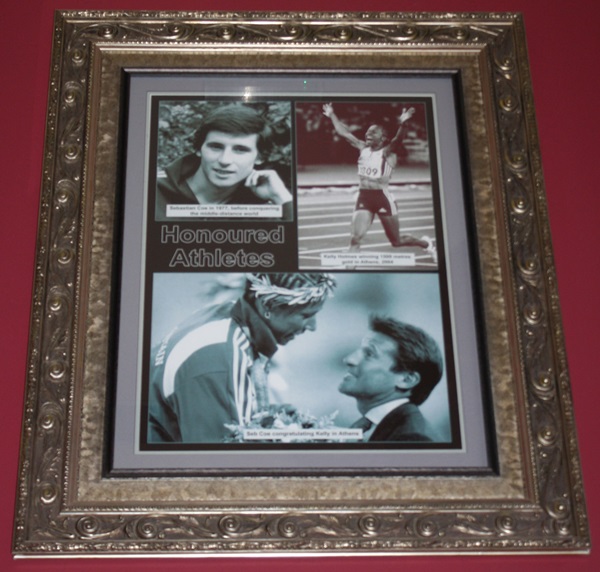
A framed photograph of Mark Firth, Mayor of Sheffield, 1874.
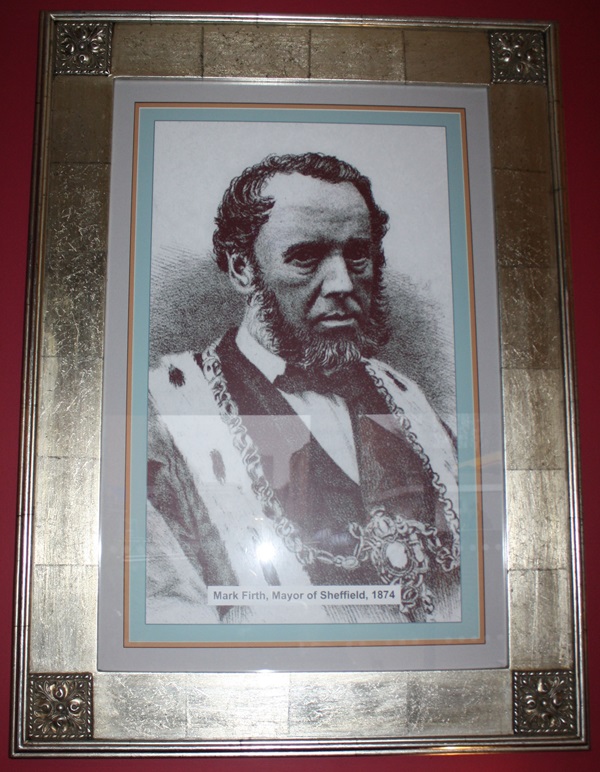
A framed photograph of George Wostenholm in New York, 1856.
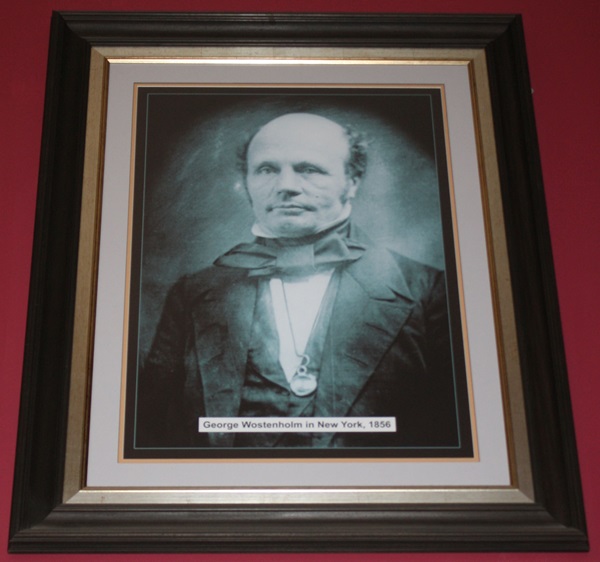
A framed photograph of The Sheaf Brewery, Ecclesall Road.
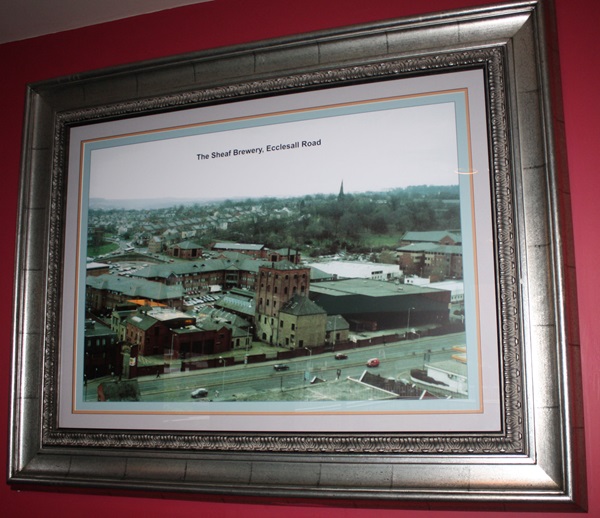
A framed photograph of Sheffield from Psalter Lane at Brincliffe Edge, with Sharrow Mills in the middle distance, 1849.
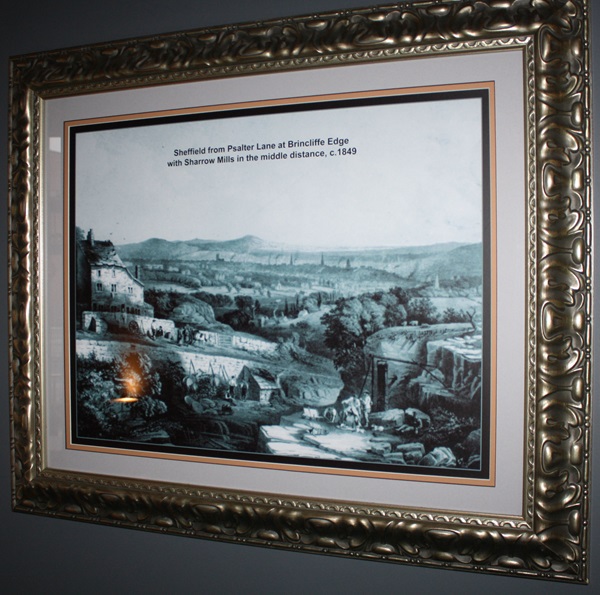
A framed drawing of Messrs Greaves’ Sheaf Works.
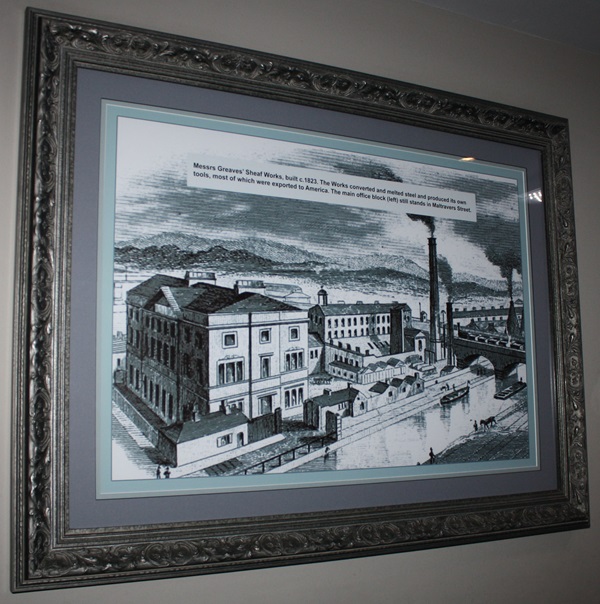
The text reads: Messrs Greaves’ Sheaf Works, built c. 1823. The Works converted and melted steel and produced its own tools, most of which were exported to America. The main office block (left) still stands in Maltravers Street.
A framed drawing of the view of Sheffield from Lady’s Bridge, 1875.
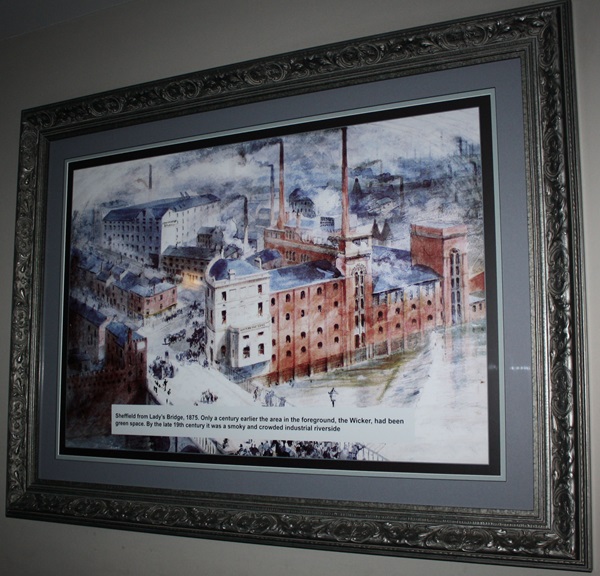
The text reads: Sheffield from Lady’s Bridge, 1875. Only a century earlier the area in the foreground, the Wicker, had been green space. By the late 19th century it was a smoky and crowded industrial riverside.
A framed photograph of Hunter’s Bar Toll House.
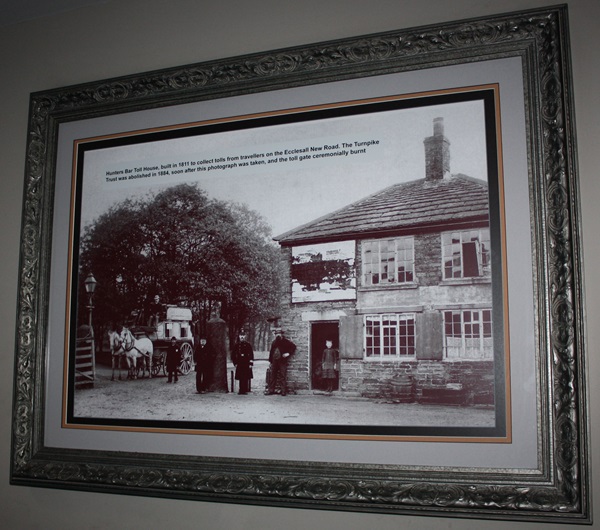
The text reads: Hunters Bar Toll House, built in 1811 to collect tolls from travellers on the Ecclesall New Road. The Turnpike Trust was abolished in 1884, soon after this photograph was taken, and the toll gate ceremonially burnt.
A framed drawing of The General Cemetery, 1836.
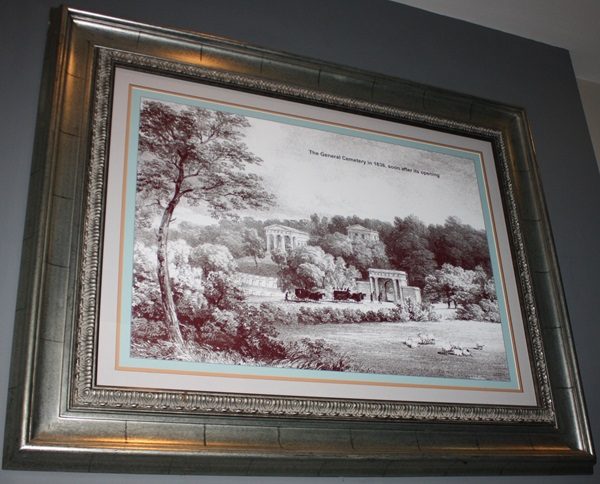
A framed drawing of Kenwood Park, 1850.
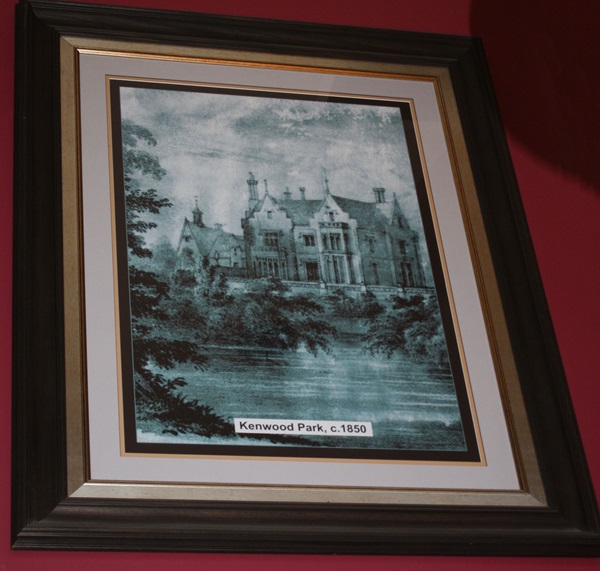
A sculpture entitled Hop Sculpture, by Michael Johnson.
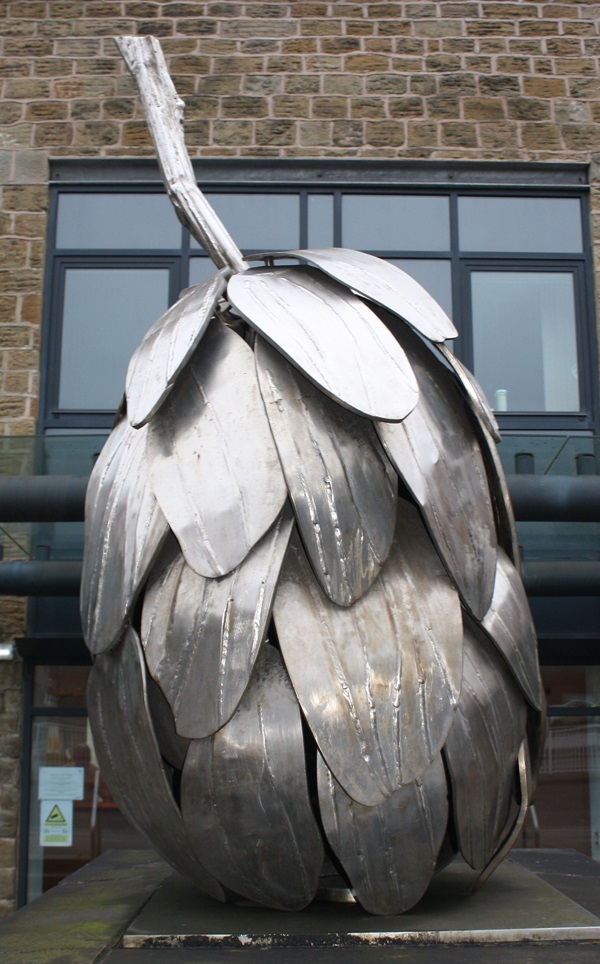
The text reads: Beer has been produced on this site for over 200 years using hops as a basic ingredient.
Brewing equipment used as decorative features on the walls.
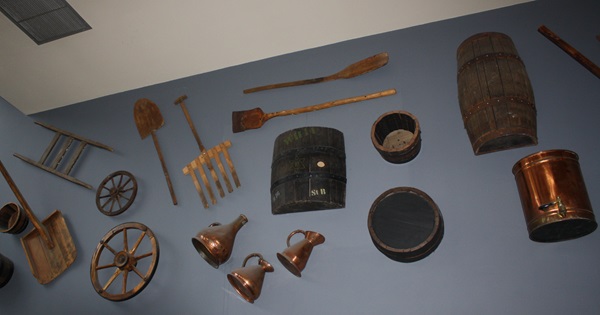
A framed painting entitled Midsummer – Whirlow Park, Ecclesall, by Martin Decent.
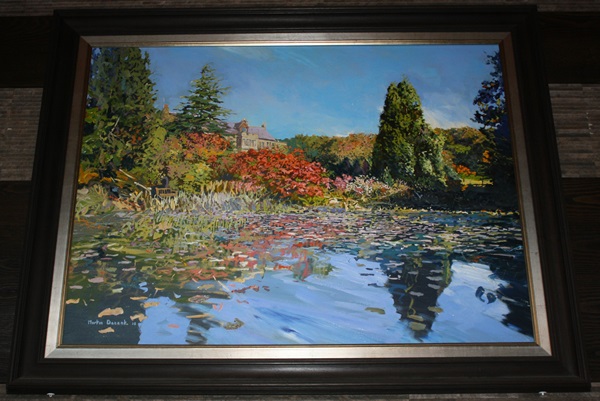
The text reads: “Midsummer” is 2 miles from Sheaf Island. Out of town along Ecclesall Road is Whirlow Park, one of the many municipal Sheffield Parks.
Martin Decent is a well known Sheffield painter and one of the “Sheffield Colourists” a name reflecting the distinctive style evident in his work. He recently won the National Art Open and his work is collected by people both locally and nationally. He has been a professional Artist for 20 years and was born, and still lives in Sheffield.
The entrance to Wards Brewery, now used by Double Maxim Beer Company.
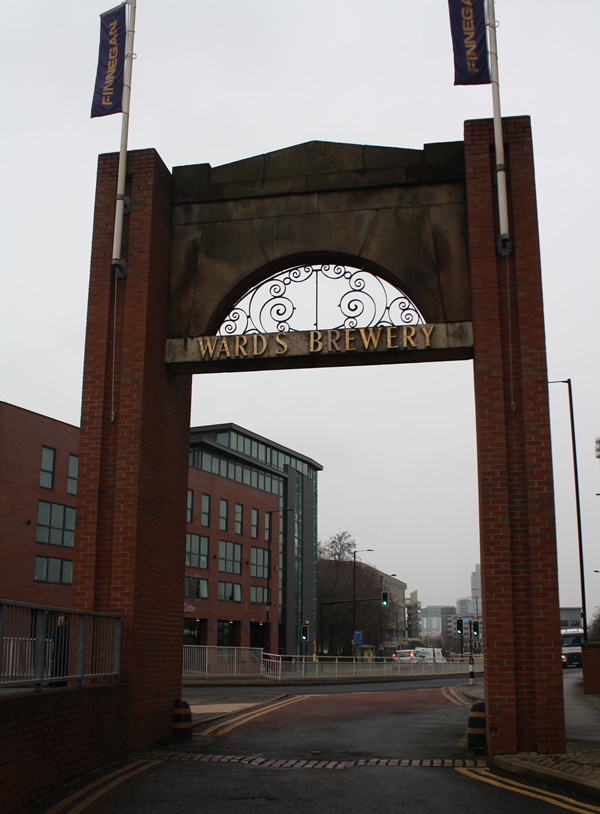
The most famous beer produced here was Wards Best Bitter.
External photograph of the building – main entrance.
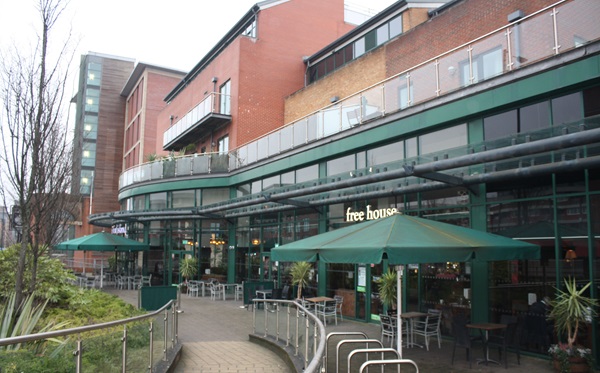
If you have information on the history of this pub, then we’d like you to share it with us. Please e-mail all information to: pubhistories@jdwetherspoon.co.uk